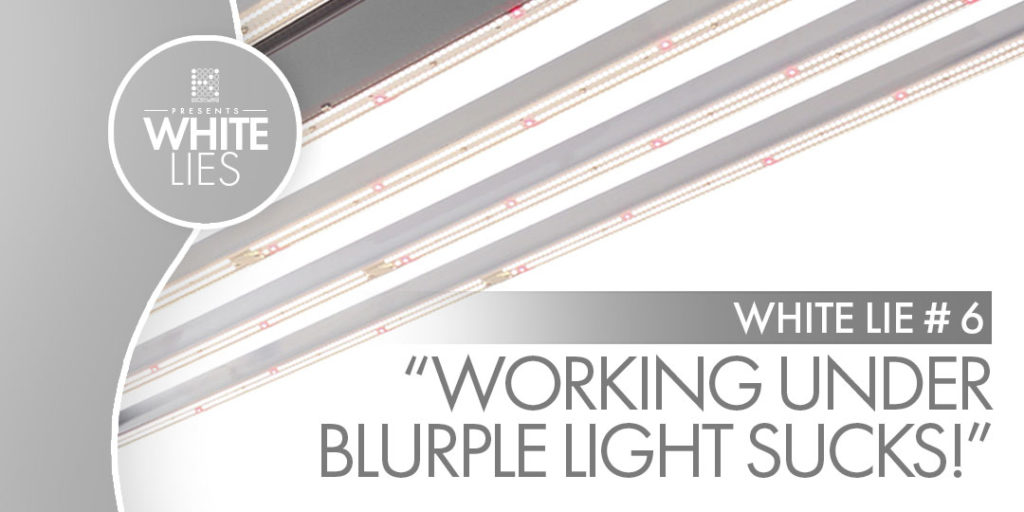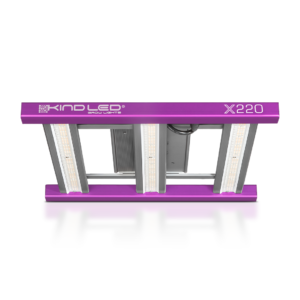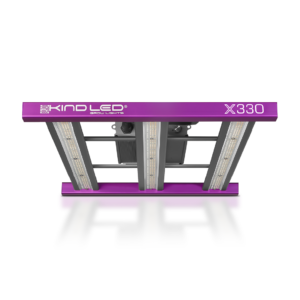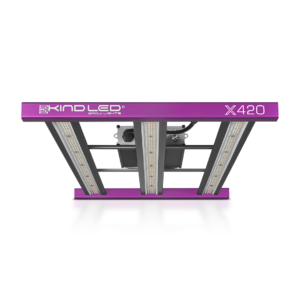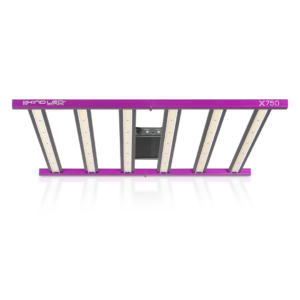Welcome to a new blog series from Grow Strong Industries where we address some of the misinformation currently being spread by the white light LED manufacturers so prolific in the horticultural lighting industry. If you haven’t yet had the opportunity, please read the other posts in this series.
- White Lie #1: Efficacy is more important than PPFD
- White Lie #2: Efficacy is the single most important aspect of an LED Grow Light
- White Lie #3: Full-Spectrum white light is best for your plants
- White Lie #4: Efficacy is synonymous with efficiency
- White Lie #5: There’s no such thing as a “magical growth spectrum” for plants
White Lie #6 – “Working under Blurple LEDs sucks”
Ah, yes. “Blurple.” We hear this one a lot. Let’s get into it, shall we?
Since the primary focus of targeted-spectrum LED grow lights is on the blue and red parts of the visible spectrum and much of the wasteful green and yellow light has been removed, the light produced by these fixtures looks purple, or even pink. Because of this, some growers have started to refer to these fixtures as “blurple” LED grow lights.
While white-light LED manufacturers have long used this simple difference in appearance as validation that full-spectrum fixtures are ideal for grow environments, it’s important to remember that LED grow lights exist for the benefit of plants, not people. White-light LEDs may be easier to manufacture and photograph better, but these are human conveniences-and it’s important to understand that humans and plants interact with light differently.
When someone starts looking for LED grow lights for the first time, they need to adjust the way they think about light itself. When it comes to LED grow lights, things like lumens matter much less to your plants than they do to you. For plants, the spectrum is considerably more important than how bright the light is. There are also a bunch of brand new terms most people have never heard of, like PAR, PPFD, and efficacy. So it’s no surprise that the concept of growing under a different colored light can be a bit of a shock. But there’s a very good reason that these lights look the way they do-and it’s for the benefit of plants, not people.
Decades of light science research have taught us some fundamental facts about how plants interact with light. We know that the blue part of the spectrum is most effective during the vegetative stage of a plant’s growth cycle, while red light is ideal for the flowering cycle. For this reason, reputable LED grow light manufacturers engineer their spectrum to focus on the parts of the spectrum that most benefit plants, not humans. Certain fixtures even allow the grower to adjust that spectrum throughout their plant’s life cycle, allowing growers unprecedented control over the growth of their plants.
A targeted spectrum is much more beneficial to plants, and ultimately, that is what matters for growers everywhere, from home growers to commercial cultivation facilities.
